Mingu Lee
KeyDiff: Key Similarity-Based KV Cache Eviction for Long-Context LLM Inference in Resource-Constrained Environments
Apr 23, 2025Abstract:In this work, we demonstrate that distinctive keys during LLM inference tend to have high attention scores. We explore this phenomenon and propose KeyDiff, a training-free KV cache eviction method based on key similarity. This method facilitates the deployment of LLM-based application requiring long input prompts in resource-constrained environments with limited memory and compute budgets. Unlike other KV cache eviction methods, KeyDiff can process arbitrarily long prompts within strict resource constraints and efficiently generate responses. We demonstrate that KeyDiff computes the optimal solution to a KV cache selection problem that maximizes key diversity, providing a theoretical understanding of KeyDiff. Notably,KeyDiff does not rely on attention scores, allowing the use of optimized attention mechanisms like FlashAttention. We demonstrate the effectiveness of KeyDiff across diverse tasks and models, illustrating a performance gap of less than 0.04\% with 8K cache budget ($\sim$ 23\% KV cache reduction) from the non-evicting baseline on the LongBench benchmark for Llama 3.1-8B and Llama 3.2-3B.
KeDiff: Key Similarity-Based KV Cache Eviction for Long-Context LLM Inference in Resource-Constrained Environments
Apr 21, 2025Abstract:In this work, we demonstrate that distinctive keys during LLM inference tend to have high attention scores. We explore this phenomenon and propose KeyDiff, a training-free KV cache eviction method based on key similarity. This method facilitates the deployment of LLM-based application requiring long input prompts in resource-constrained environments with limited memory and compute budgets. Unlike other KV cache eviction methods, KeyDiff can process arbitrarily long prompts within strict resource constraints and efficiently generate responses. We demonstrate that KeyDiff computes the optimal solution to a KV cache selection problem that maximizes key diversity, providing a theoretical understanding of KeyDiff. Notably,KeyDiff does not rely on attention scores, allowing the use of optimized attention mechanisms like FlashAttention. We demonstrate the effectiveness of KeyDiff across diverse tasks and models, illustrating a performance gap of less than 0.04\% with 8K cache budget ($\sim$ 23\% KV cache reduction) from the non-evicting baseline on the LongBench benchmark for Llama 3.1-8B and Llama 3.2-3B.
CAOTE: KV Caching through Attention Output Error based Token Eviction
Apr 18, 2025Abstract:While long context support of large language models has extended their abilities, it also incurs challenges in memory and compute which becomes crucial bottlenecks in resource-restricted devices. Token eviction, a widely adopted post-training methodology designed to alleviate the bottlenecks by evicting less important tokens from the cache, typically uses attention scores as proxy metrics for token importance. However, one major limitation of attention score as a token-wise importance metrics is that it lacks the information about contribution of tokens to the attention output. In this paper, we propose a simple eviction criterion based on the contribution of cached tokens to attention outputs. Our method, CAOTE, optimizes for eviction error due to token eviction, by seamlessly integrating attention scores and value vectors. This is the first method which uses value vector information on top of attention-based eviction scores. Additionally, CAOTE can act as a meta-heuristic method with flexible usage with any token eviction method. We show that CAOTE, when combined with the state-of-the-art attention score-based methods, always improves accuracies on the downstream task, indicating the importance of leveraging information from values during token eviction process.
AdaEDL: Early Draft Stopping for Speculative Decoding of Large Language Models via an Entropy-based Lower Bound on Token Acceptance Probability
Oct 24, 2024
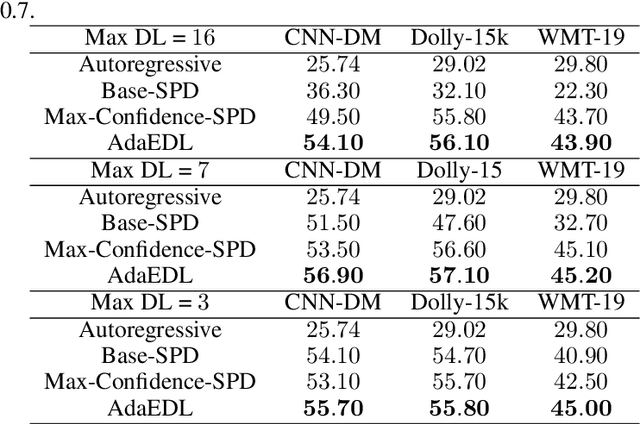
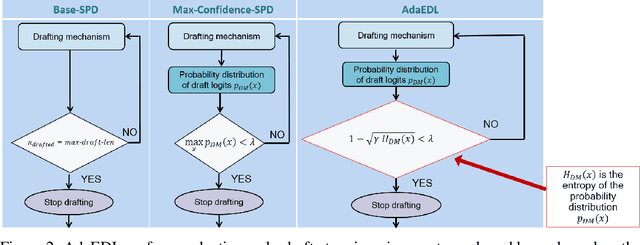

Abstract:Speculative decoding is a powerful technique that attempts to circumvent the autoregressive constraint of modern Large Language Models (LLMs). The aim of speculative decoding techniques is to improve the average inference time of a large, target model without sacrificing its accuracy, by using a more efficient draft model to propose draft tokens which are then verified in parallel. The number of draft tokens produced in each drafting round is referred to as the draft length and is often a static hyperparameter chosen based on the acceptance rate statistics of the draft tokens. However, setting a static draft length can negatively impact performance, especially in scenarios where drafting is expensive and there is a high variance in the number of tokens accepted. Adaptive Entropy-based Draft Length (AdaEDL) is a simple, training and parameter-free criteria which allows for early stopping of the token drafting process by approximating a lower bound on the expected acceptance probability of the drafted token based on the currently observed entropy of the drafted logits. We show that AdaEDL consistently outperforms static draft-length speculative decoding by 10%-57% as well as other training-free draft-stopping techniques by upto 10% in a variety of settings and datasets. At the same time, we show that AdaEDL is more robust than these techniques and preserves performance in high-sampling-temperature scenarios. Since it is training-free, in contrast to techniques that rely on the training of dataset-specific draft-stopping predictors, AdaEDL can seamlessly be integrated into a variety of pre-existing LLM systems.
Live Fitness Coaching as a Testbed for Situated Interaction
Jul 11, 2024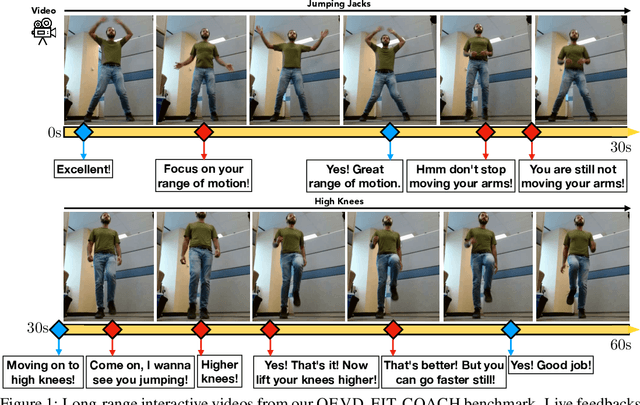



Abstract:Tasks at the intersection of vision and language have had a profound impact in advancing the capabilities of vision-language models such as dialog-based assistants. However, models trained on existing tasks are largely limited to turn-based interactions, where each turn must be stepped (i.e., prompted) by the user. Open-ended, asynchronous interactions where an AI model may proactively deliver timely responses or feedback based on the unfolding situation in real-time are an open challenge. In this work, we present the QEVD benchmark and dataset which explores human-AI interaction in the challenging, yet controlled, real-world domain of fitness coaching - a task which intrinsically requires monitoring live user activity and providing timely feedback. It is the first benchmark that requires assistive vision-language models to recognize complex human actions, identify mistakes grounded in those actions, and provide appropriate feedback. Our experiments reveal the limitations of existing state of the art vision-language models for such asynchronous situated interactions. Motivated by this, we propose a simple end-to-end streaming baseline that can respond asynchronously to human actions with appropriate feedbacks at the appropriate time.
ToSA: Token Selective Attention for Efficient Vision Transformers
Jun 13, 2024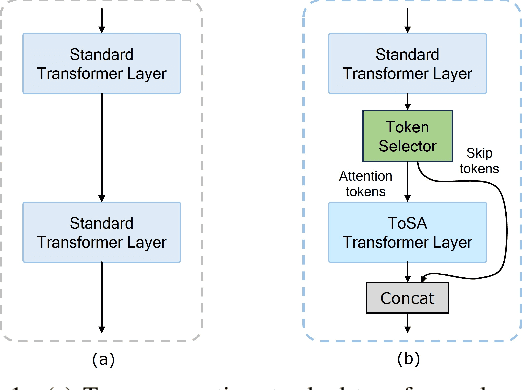

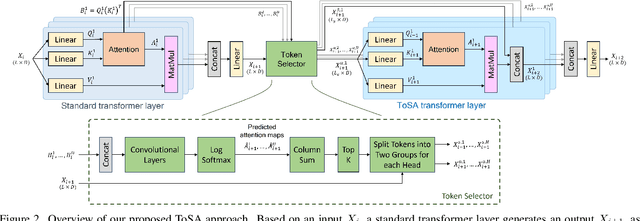

Abstract:In this paper, we propose a novel token selective attention approach, ToSA, which can identify tokens that need to be attended as well as those that can skip a transformer layer. More specifically, a token selector parses the current attention maps and predicts the attention maps for the next layer, which are then used to select the important tokens that should participate in the attention operation. The remaining tokens simply bypass the next layer and are concatenated with the attended ones to re-form a complete set of tokens. In this way, we reduce the quadratic computation and memory costs as fewer tokens participate in self-attention while maintaining the features for all the image patches throughout the network, which allows it to be used for dense prediction tasks. Our experiments show that by applying ToSA, we can significantly reduce computation costs while maintaining accuracy on the ImageNet classification benchmark. Furthermore, we evaluate on the dense prediction task of monocular depth estimation on NYU Depth V2, and show that we can achieve similar depth prediction accuracy using a considerably lighter backbone with ToSA.
On Speculative Decoding for Multimodal Large Language Models
Apr 13, 2024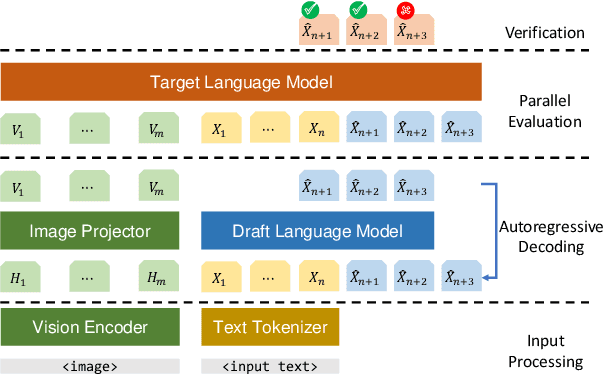
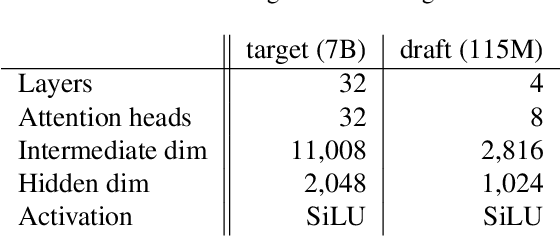
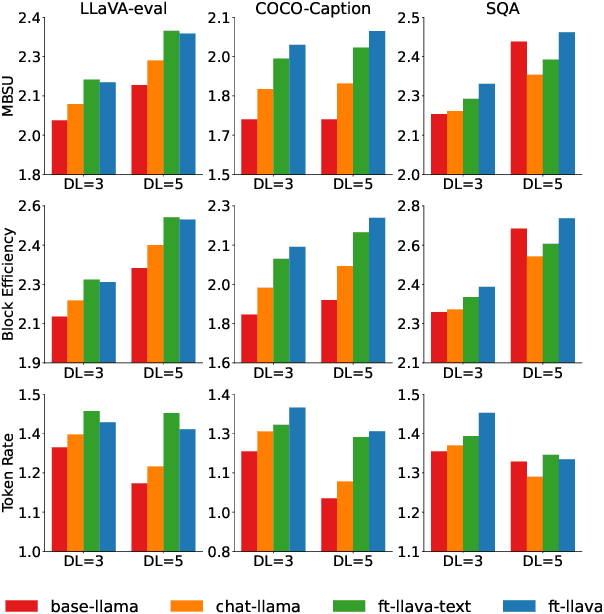
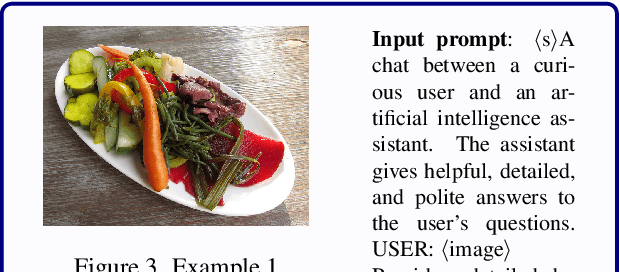
Abstract:Inference with Multimodal Large Language Models (MLLMs) is slow due to their large-language-model backbone which suffers from memory bandwidth bottleneck and generates tokens auto-regressively. In this paper, we explore the application of speculative decoding to enhance the inference efficiency of MLLMs, specifically the LLaVA 7B model. We show that a language-only model can serve as a good draft model for speculative decoding with LLaVA 7B, bypassing the need for image tokens and their associated processing components from the draft model. Our experiments across three different tasks show that speculative decoding can achieve a memory-bound speedup of up to 2.37$\times$ using a 115M parameter language model that we trained from scratch. Additionally, we introduce a compact LLaVA draft model incorporating an image adapter, which shows marginal performance gains in image captioning while maintaining comparable results in other tasks.
HyperCLOVA X Technical Report
Apr 13, 2024Abstract:We introduce HyperCLOVA X, a family of large language models (LLMs) tailored to the Korean language and culture, along with competitive capabilities in English, math, and coding. HyperCLOVA X was trained on a balanced mix of Korean, English, and code data, followed by instruction-tuning with high-quality human-annotated datasets while abiding by strict safety guidelines reflecting our commitment to responsible AI. The model is evaluated across various benchmarks, including comprehensive reasoning, knowledge, commonsense, factuality, coding, math, chatting, instruction-following, and harmlessness, in both Korean and English. HyperCLOVA X exhibits strong reasoning capabilities in Korean backed by a deep understanding of the language and cultural nuances. Further analysis of the inherent bilingual nature and its extension to multilingualism highlights the model's cross-lingual proficiency and strong generalization ability to untargeted languages, including machine translation between several language pairs and cross-lingual inference tasks. We believe that HyperCLOVA X can provide helpful guidance for regions or countries in developing their sovereign LLMs.
Direct Alignment of Draft Model for Speculative Decoding with Chat-Fine-Tuned LLMs
Mar 08, 2024Abstract:Text generation with Large Language Models (LLMs) is known to be memory bound due to the combination of their auto-regressive nature, huge parameter counts, and limited memory bandwidths, often resulting in low token rates. Speculative decoding has been proposed as a solution for LLM inference acceleration. However, since draft models are often unavailable in the modern open-source LLM families, e.g., for Llama 2 7B, training a high-quality draft model is required to enable inference acceleration via speculative decoding. In this paper, we propose a simple draft model training framework for direct alignment to chat-capable target models. With the proposed framework, we train Llama 2 Chat Drafter 115M, a draft model for Llama 2 Chat 7B or larger, with only 1.64\% of the original size. Our training framework only consists of pretraining, distillation dataset generation, and finetuning with knowledge distillation, with no additional alignment procedure. For the finetuning step, we use instruction-response pairs generated by target model for distillation in plausible data distribution, and propose a new Total Variation Distance++ (TVD++) loss that incorporates variance reduction techniques inspired from the policy gradient method in reinforcement learning. Our empirical results show that Llama 2 Chat Drafter 115M with speculative decoding achieves up to 2.3 block efficiency and 2.4$\times$ speed-up relative to autoregressive decoding on various tasks with no further task-specific fine-tuning.
Recursive Speculative Decoding: Accelerating LLM Inference via Sampling Without Replacement
Mar 05, 2024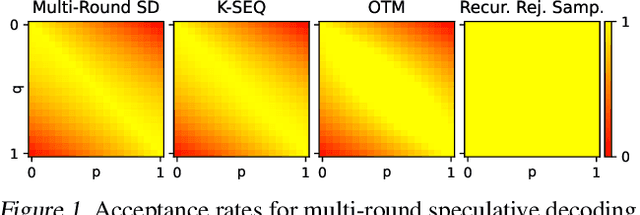
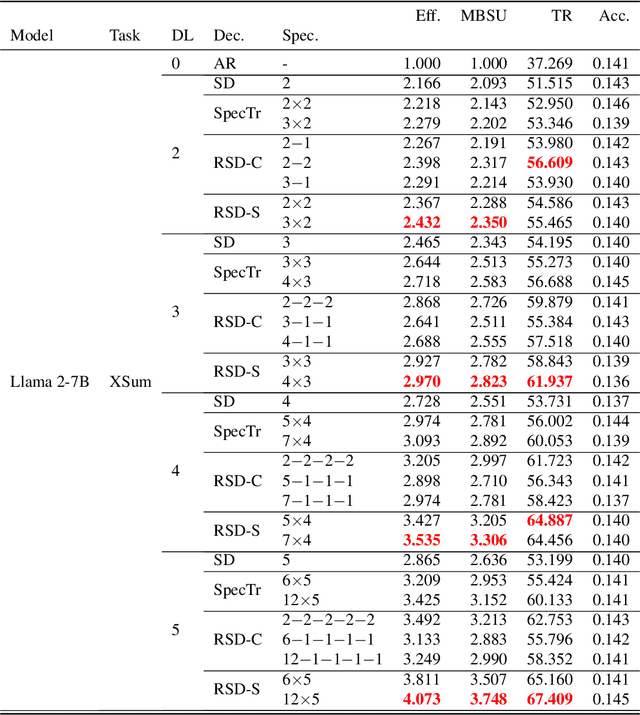
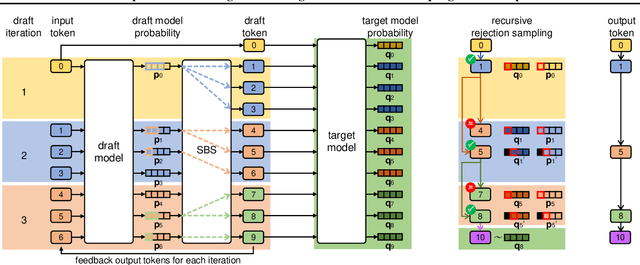

Abstract:Speculative decoding is an inference-acceleration method for large language models (LLMs) where a small language model generates a draft-token sequence which is further verified by the target LLM in parallel. Recent works have advanced this method by establishing a draft-token tree, achieving superior performance over a single-sequence speculative decoding. However, those works independently generate tokens at each level of the tree, not leveraging the tree's entire diversifiability. Besides, their empirical superiority has been shown for fixed length of sequences, implicitly granting more computational resource to LLM for the tree-based methods. None of the existing works has conducted empirical studies with fixed target computational budgets despite its importance to resource-bounded devices. We present Recursive Speculative Decoding (RSD), a novel tree-based method that samples draft tokens without replacement and maximizes the diversity of the tree. During RSD's drafting, the tree is built by either Gumbel-Top-$k$ trick that draws tokens without replacement in parallel or Stochastic Beam Search that samples sequences without replacement while early-truncating unlikely draft sequences and reducing the computational cost of LLM. We empirically evaluate RSD with Llama 2 and OPT models, showing that RSD outperforms the baseline methods, consistently for fixed draft sequence length and in most cases for fixed computational budgets at LLM.
 Add to Chrome
Add to Chrome Add to Firefox
Add to Firefox Add to Edge
Add to Edge